1953 Rover P4 75
February 2018 - Tear down (Part 1)
Return to Home
Return to Resources
Return to Rover P4 page

January 28th - First day of tear down. All the aluminum doors, hood and trunk (bonnet and boot according to the English) were taken off. All the non-original interior seats, carpeting, bulky air conditioning were all taken out and dumped.
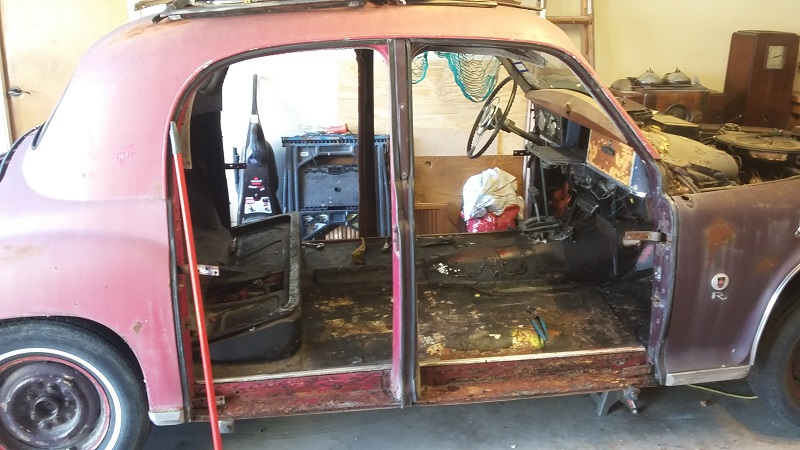
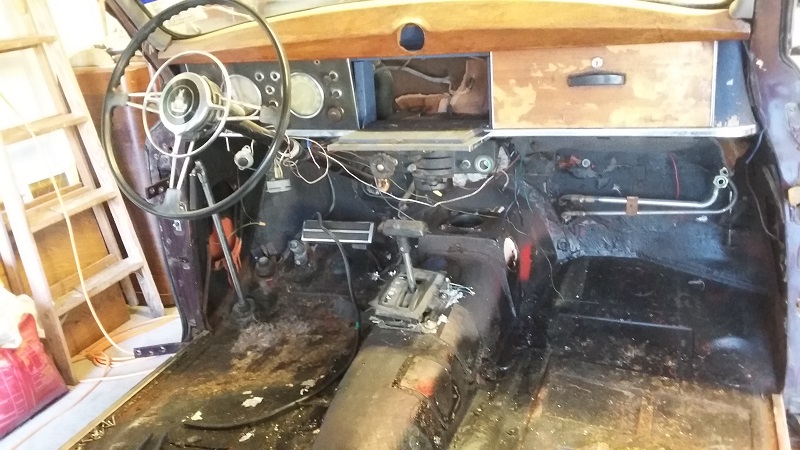
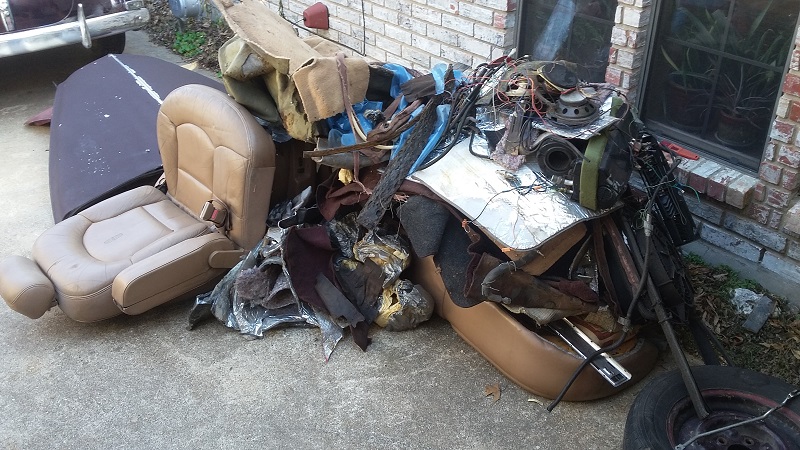
The pile of non-original interior stuff going to the trash. The air conditioning condenser that normally would be located in the front of the radiator turned out to be mounted at the bottom of the car between the middle two frame crossmembers. Brilliant way to collect grease and road grime!
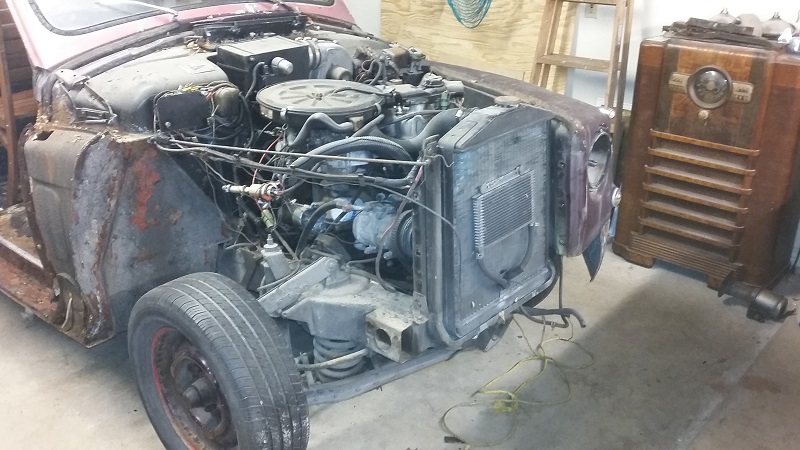
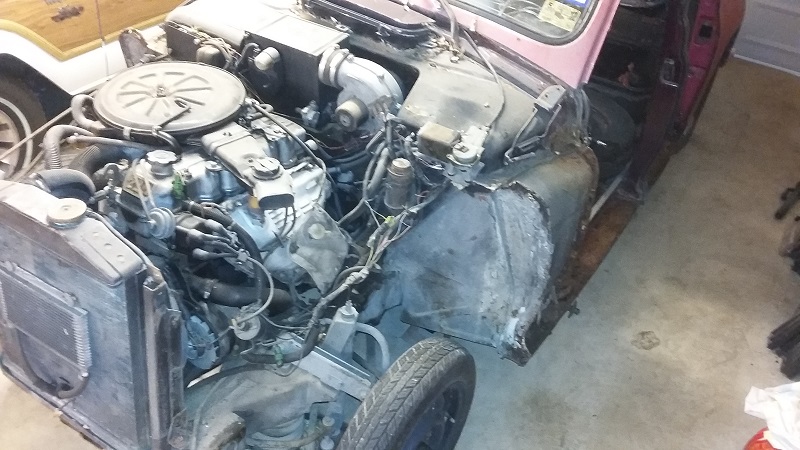
Front passenger side fenders removed showing a better view of the Toyota 22R.
Common Rust Spots
From what I have gathered looking at other P4 pictures online, this Rover P4 was not immune to some of the common rust issues that afflict many P4 cars
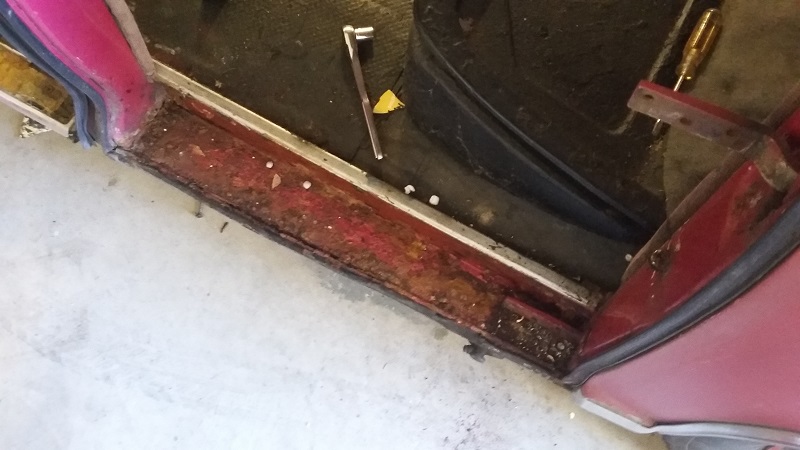
The bottom of the door sills have turned into swiss cheese with rust developing where there was standing water. All the other door sills on this car have similar issues. Overall the sills were all fairly solid with a few rusted through holes that will need to be cut out and replaced. Other P4s exposed to snow and salty roads often have worse looking door sills that require more extensive repair.
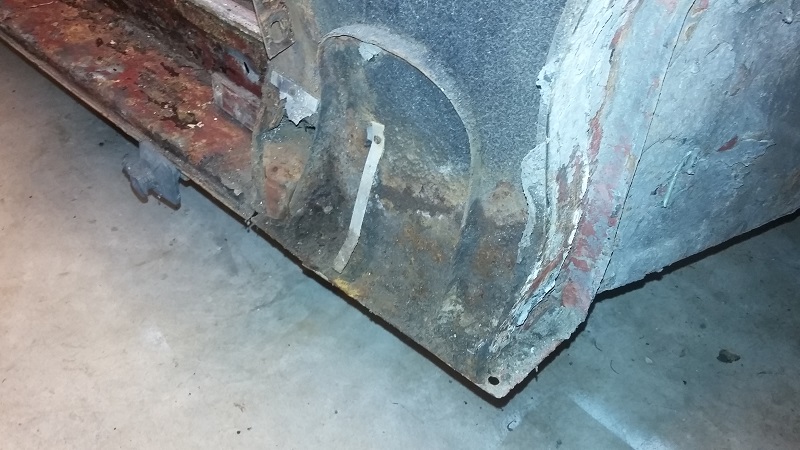
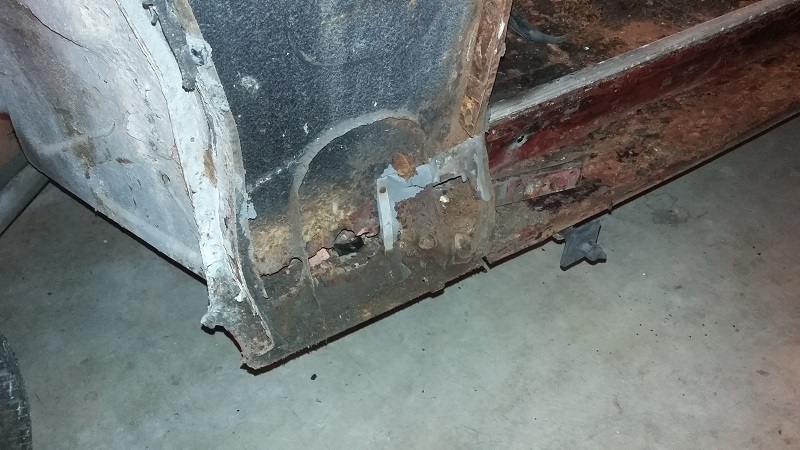
The bottom front corners of the main body shell right behind the front tires often trap debris and moisture that later cause severe rust to develop. These corners are not visible without moving the front fenders out of the way. This P4 doesn't have it as bad compared to others that were more exposed to winter weather conditions.
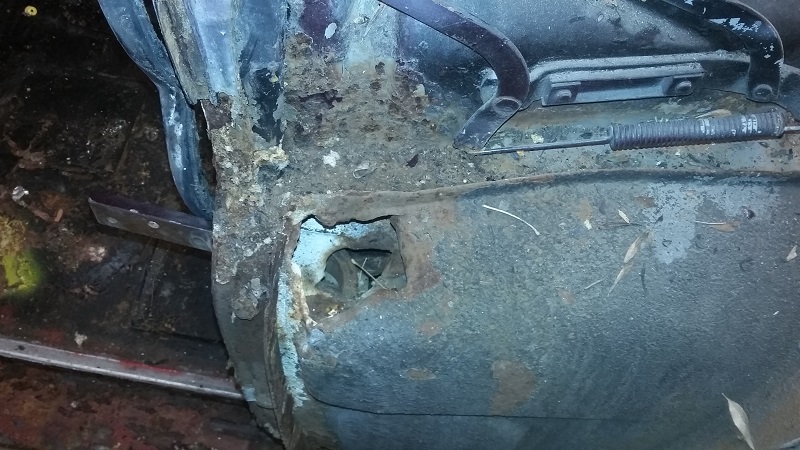
The previous owner wanted to install a radio and decided to punch a hole in the passenger side fender to stick in an electric antenna. Aside from that, the gutter just below the hood hinge tends to trap debris, moisture and develop rust.
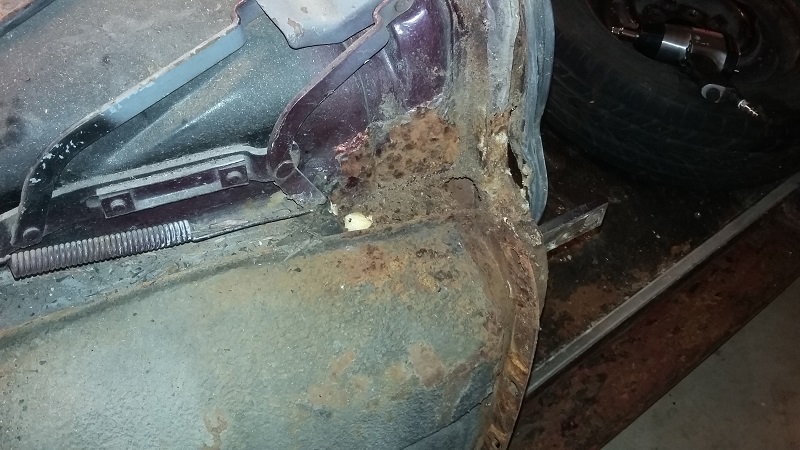
The driver side body gutter near the hood hinge has rusted through.
A Closer Inspection
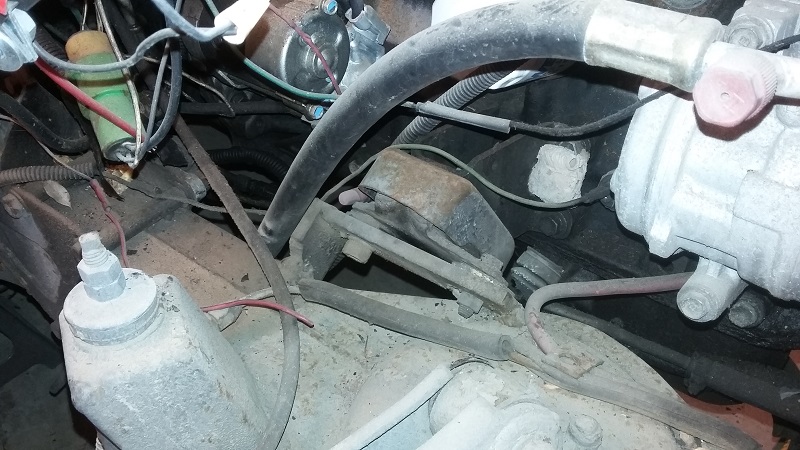
A close up view of the custom welded mount bracket for mounting the Toyota 22R engine to the frame. 1/4 inch thick steel bar with a huge blob of a weld. Doesn't look very clean or professional.
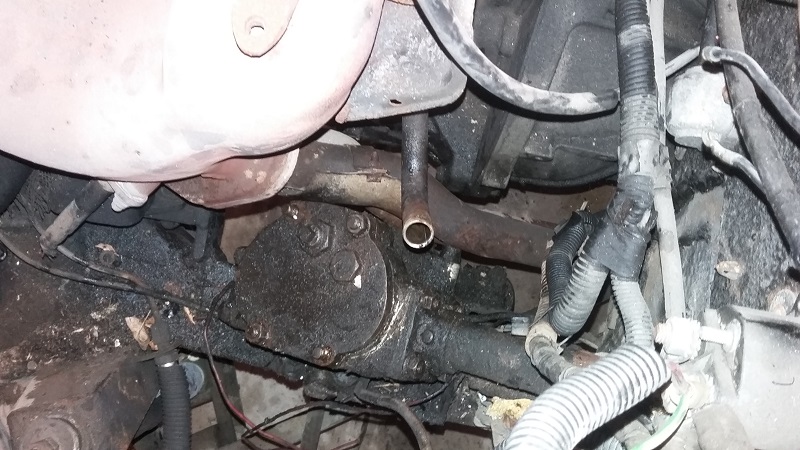
Frame and steering box is covered in grease and dirt. The 22R exhaust pipe nearly touches the steering box!

First indication of the original Ivory paint color behind the Serial Number plate near the upper door hinge on the left hand driver side.
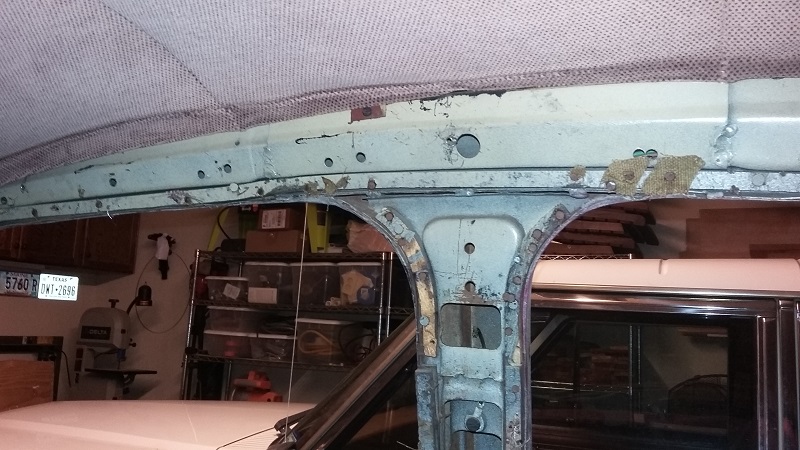
Another supporting indicator of the original Ivory paint color from overspray on the interior steel behind the upholstery panels.
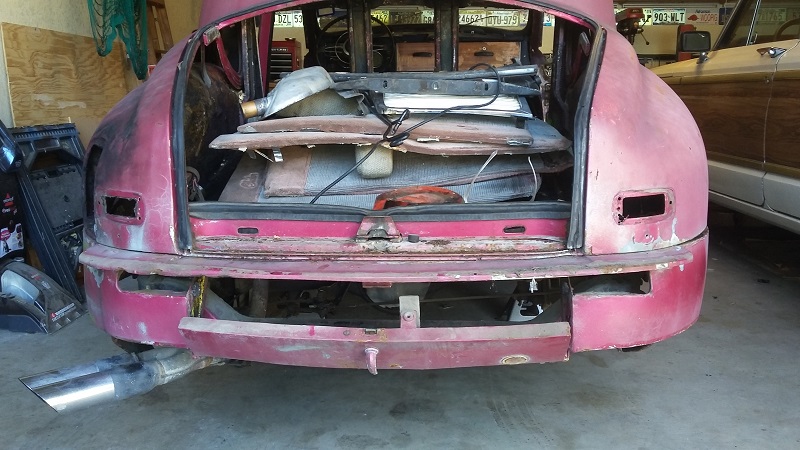
A view of the rear body with bumper and tail lights removed.
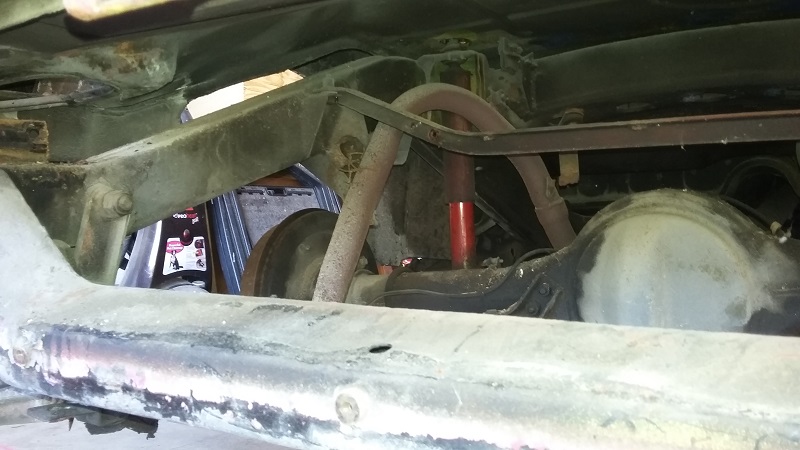
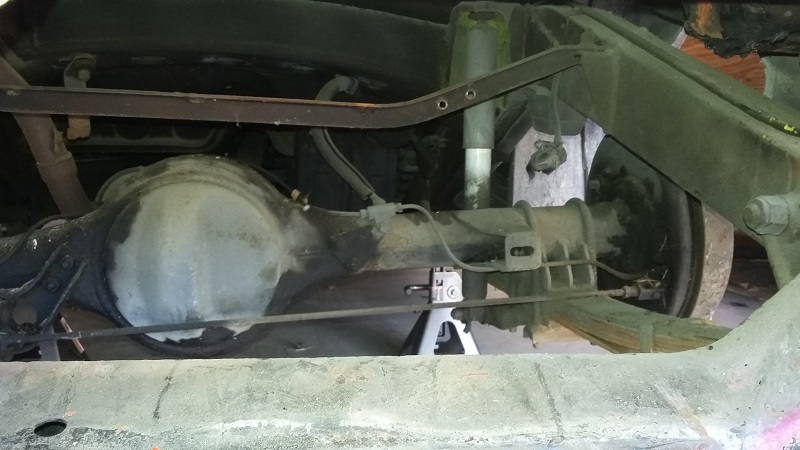
After dropping the gas tank and removing the spare tire rack, here is a view of the rear end and axle all covered in grease and dirt. Quite a great rust inhibitor. Who needs paint?! The rear shocks were replaced some time ago with USA brand types but they were not even identical pairs. The white one on the right has a shorter travel than the red one on the left resulting in the axle dropping lopsided. Even more startling is the left shock was tied to the lower leaf spring mount using a steel clothes hanger because the mounting bolt had broken off.
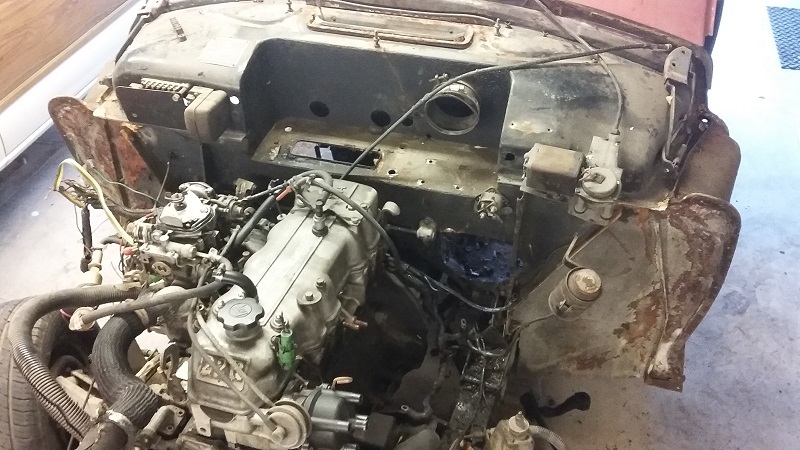
Removed Toyota 22R exhaust header, pipes, steering box, heater core and blower, among other things to prepare for the body to come off the frame.
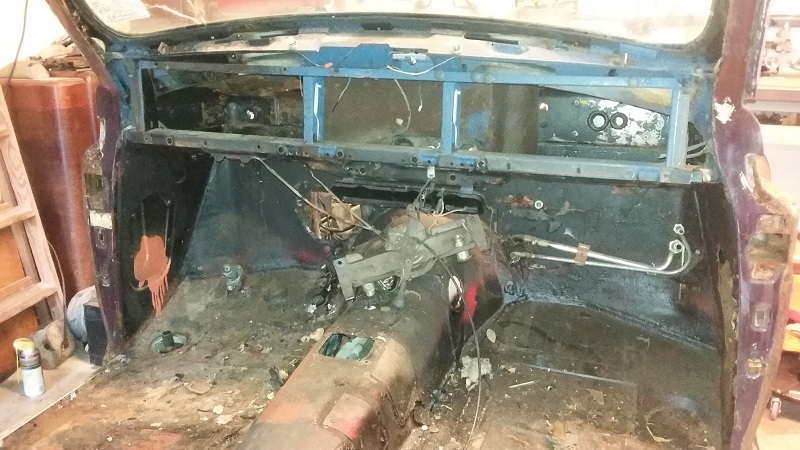
Nearly bare bones interior. All dash components were removed, labeled and put away for later restoration.